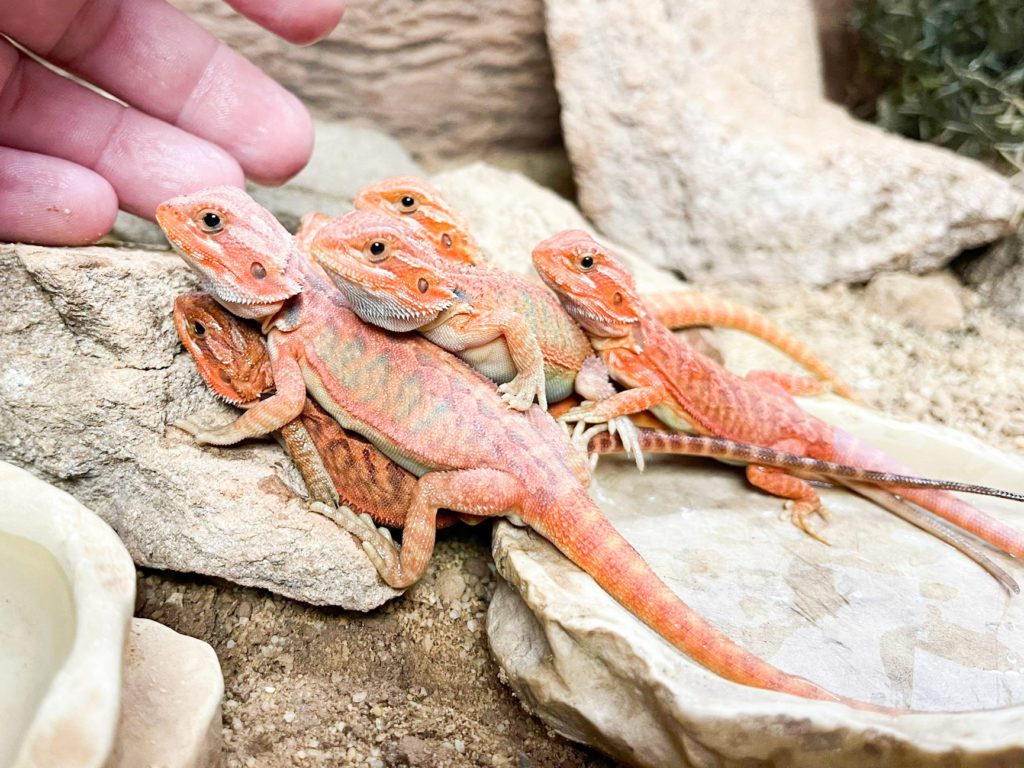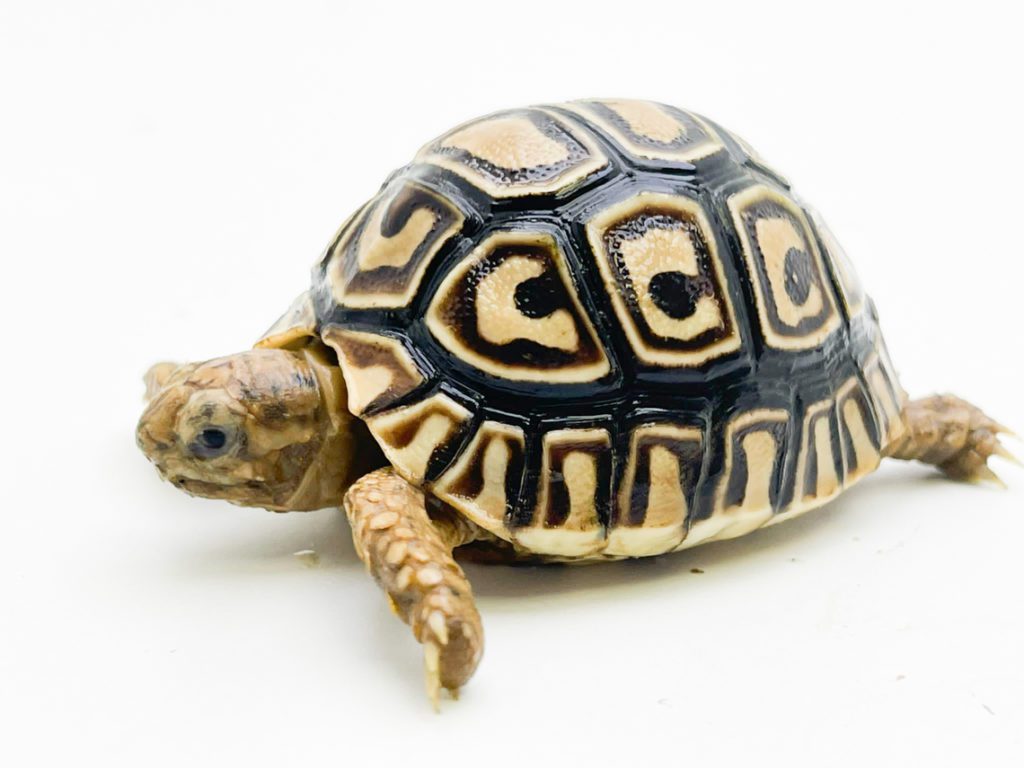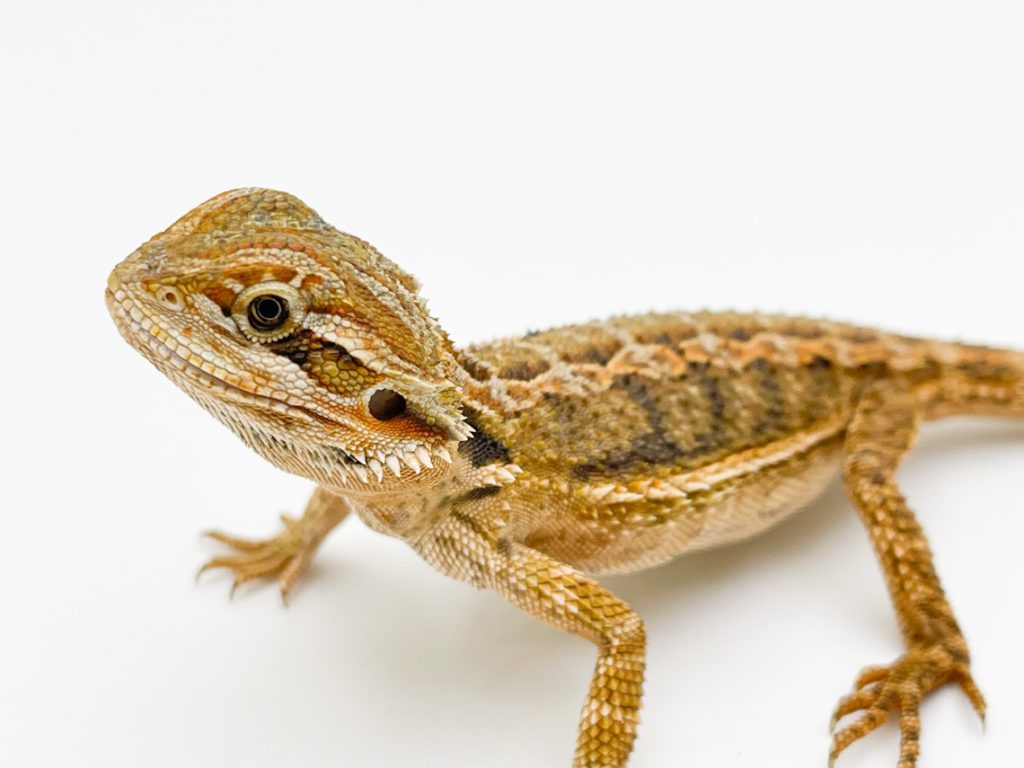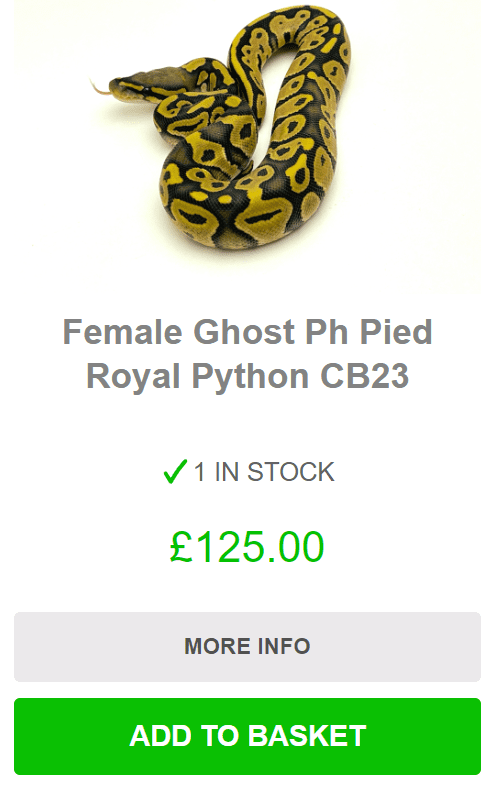
Keeping Reptiles as Pets
Is a Reptile pet right for me?


Purchasing any kind of reptile can be a daunting thought for those who have previously had mammal pets. Here are some things to consider before purchasing your reptile pet.
Reptiles are different to mammals in that they have cold blood. This means that they require a heat source in order to reach their optimum temperature which is required in order to process food and behave normally. When reptiles do not get to their correct temperatures, this can cause a great variety of problems.










Common Types of Reptile Pet
There are many types of Reptile pet available on the market. The most common types are Tortoises and Bearded Dragons.
Both Tortoises and Dragons make fantastic family pets. They have long lifespans and are very interactive animals. They also tame fairly easily and are usually good choices for children. As they are the most common pet, they are also one of the most rehomed reptile pet in the country. One of the considerations when purchasing your reptile pet is its lifespan. Although they are able to be rehomed, we never advise getting a pet which you do not think you will be able to care for for its life. Although Reptiles do not think and feel like we do, they do get used to routine, smells and their environment and it can be stressful to rehome them.
If you need to rehome your reptile pet, please contact us. (please note: we do charge £20 rehoming fee which covers the maintenance of your rehomed pet during the quarantine period, all animals will be subject to a health check prior to being taken in and may be refused if they are not in good health).
Other common reptile pets are Leopard Geckos, Crested Geckos, Frogs and Snakes. These are all great options for pets providing you have the correct equipment and enclosure for your animal. Although Reptiles are cheaper than some mammal pets, they do require correct parameters in order to remain in good health. New owners should expect their enclosure to potentially cost more expensive than their pet, this is because they are not from this country and require specific temperatures and levels of UVB depending on where they come from in the wild.







Common Types of Reptile Pet
There are many types of Reptile pet available on the market. The most common types are Tortoises and Bearded Dragons.
Both Tortoises and Dragons make fantastic family pets. They have long lifespans and are very interactive animals. They also tame fairly easily and are usually good choices for children. As they are the most common pet, they are also one of the most rehomed reptile pet in the country. One of the considerations when purchasing your reptile pet is its lifespan. Although they are able to be rehomed, we never advise getting a pet which you do not think you will be able to care for for its life. Although Reptiles do not think and feel like we do, they do get used to routine, smells and their environment and it can be stressful to rehome them.
If you need to rehome your reptile pet, please contact us. (please note: we do charge £20 rehoming fee which covers the maintenance of your rehomed pet during the quarantine period, all animals will be subject to a health check prior to being taken in and may be refused if they are not in good health).
Other common reptile pets are Leopard Geckos, Crested Geckos, Frogs and Snakes. These are all great options for pets providing you have the correct equipment and enclosure for your animal. Although Reptiles are cheaper than some mammal pets, they do require correct parameters in order to remain in good health. New owners should expect their enclosure to potentially cost more expensive than their pet, this is because they are not from this country and require specific temperatures and levels of UVB depending on where they come from in the wild.












General Problems & Solutions
Reptiles, like any other pet are prone to some common problems. We recommend that you seek insurance for your reptile pet in the same way you would a dog or cat (note: not all reptiles can be insured, seek insurance provider details online) so that you are covered if your pet needs help.
Common health issues:
Snake/Lizard/Tortoise not eating: Reptiles require external heat in order to reach their optimum temperature required to process their food. If reptiles are not warm enough to process their food when they eat, it can cause issues such as regurgitation of the food item or further digestion problems, so they usually know when they are not warm enough. This is a common reason why reptiles stop eating so always check your temperatures. If you are contacting us for advice, we will ask the size and temperature of your enclosure on both the hot and cold sides. Reptiles not feeding can also be related to other things, once your pet is of breeding age, they may stop feeding over winter /spring you can stop this by raising their temperatures (within safe limits for species). If you purchase your reptile pet and enclosure with us, we offer lifetime advice meaning you can always come back to us if you have a problem with your pet and we will give you as much info as we can to help you solve the problem.
Shedding issues: Reptiles grow differently to mammals and when they do they shed their outer skin. Some Reptiles eat their skin during this process such as geckos, anoles and some other lizards. Sometimes Reptiles can have problems shedding their skin if the liquid they produce to lubricate it dries out. If this happens we always recommend trying to add some humidity to your pets enclosure. This can be done by spraying the enclosure (being careful not to spray any bulbs) You can also soak your pet in some luke warm water for 20 mins at a time. There are some products such as Shedding Aid which will help your pet to shed. It is really important that shed is removed from lizards eye, toes and tail ends and snakes eyes and tail ends. If shed is left on toes and tail ends it can restrict the blood flow which can result in loss of tail ends and toes. Reptiles also shed the skin of their eyes and so it is vital that eye caps are removed. Not removing eye caps can cause loss of vision and in some cases loss of the eye itself. At the same time, it is equally important not to pull the shed off if it is stuck and damage the animals skin. If your pet is stuck in shed and you have tried raising the humidity, please contact us for advice if you purchased your animal from us. Please note: This guide is purely for consideration and is not veterinary advice. If you are concerned about the health of your pet or if your pets health has changed dramatically, please contact an experienced reptile vet.
We recommend TVHC in Lytham St Annes: 01253 729309 | 4 Greenways, Lytham Saint Annes FY8 3LY.
If you purchased your animal from us and you are not sure if you need a vet, please contact us for advice.
Mites: Reptiles mites are similar to fleas in that they live on the skin or under the scales of the animal and feed off its blood. As with fleas, mites lay eggs in pourus materials such as wood and substrate and lay eggs which then hatch, and the life cycle continues. If you don’t treat mites properly and interrupt the cycle, then they can come back quite soon after first spotted.
There are many mite treatments available including spray and fogging treatments, natural mite killers and predatory mites (which eat reptile mites). The first thing we recommend you do on discovery of mites on a snake is soak your reptile to offer some relief. This will help to remove some of the mites but it is not a fix for the problem. We always recommend a full clean of the enclosure and removal of any wood and plants so that they can be fully soaked and washed with f10 and boiling water (rinsed off). If you have purchased your animal from us and require assistance on eliminating mites then please contact us.
We recommend quarantining any new animals you purchase from shops or private sales which you are adding to your existing collection and checking their health over a 2 week period (minimum) before adding to their permanent homes (ensure that required heating and lighting parameters are met).
General Problems & Solutions
Reptiles, like any other pet are prone to some common problems. We recommend that you seek insurance for your reptile pet in the same way you would a dog or cat (note: not all reptiles can be insured, seek insurance provider details online) so that you are covered if your pet needs help.
Common health issues:
Snake/Lizard/Tortoise not eating: Reptiles require external heat in order to reach their optimum temperature required to process their food. If reptiles are not warm enough to process their food when they eat, it can cause issues such as regurgitation of the food item or further digestion problems, so they usually know when they are not warm enough. This is a common reason why reptiles stop eating so always check your temperatures. If you are contacting us for advice, we will ask the size and temperature of your enclosure on both the hot and cold sides. Reptiles not feeding can also be related to other things, once your pet is of breeding age, they may stop feeding over winter /spring you can stop this by raising their temperatures (within safe limits for species). If you purchase your reptile pet and enclosure with us, we offer lifetime advice meaning you can always come back to us if you have a problem with your pet and we will give you as much info as we can to help you solve the problem.
Shedding issues: Reptiles grow differently to mammals and when they do they shed their outer skin. Some Reptiles eat their skin during this process such as geckos, anoles and some other lizards. Sometimes Reptiles can have problems shedding their skin if the liquid they produce to lubricate it dries out. If this happens we always recommend trying to add some humidity to your pets enclosure. This can be done by spraying the enclosure (being careful not to spray any bulbs) You can also soak your pet in some luke warm water for 20 mins at a time. There are some products such as Shedding Aid which will help your pet to shed. It is really important that shed is removed from lizards eye, toes and tail ends and snakes eyes and tail ends. If shed is left on toes and tail ends it can restrict the blood flow which can result in loss of tail ends and toes. Reptiles also shed the skin of their eyes and so it is vital that eye caps are removed. Not removing eye caps can cause loss of vision and in some cases loss of the eye itself. At the same time, it is equally important not to pull the shed off if it is stuck and damage the animals skin. If your pet is stuck in shed and you have tried raising the humidity, please contact us for advice if you purchased your animal from us. Please note: This guide is purely for consideration and is not veterinary advice. If you are concerned about the health of your pet or if your pets health has changed dramatically, please contact an experienced reptile vet.
We recommend TVHC in Lytham St Annes: 01253 729309 | 4 Greenways, Lytham Saint Annes FY8 3LY.
If you purchased your animal from us and you are not sure if you need a vet, please contact us for advice.
Mites: Reptiles mites are similar to fleas in that they live on the skin or under the scales of the animal and feed off its blood. As with fleas, mites lay eggs in pourus materials such as wood and substrate and lay eggs which then hatch, and the life cycle continues. If you don’t treat mites properly and interrupt the cycle, then they can come back quite soon after first spotted.
There are many mite treatments available including spray and fogging treatments, natural mite killers and predatory mites (which eat reptile mites). The first thing we recommend you do on discovery of mites on a snake is soak your reptile to offer some relief. This will help to remove some of the mites but it is not a fix for the problem. We always recommend a full clean of the enclosure and removal of any wood and plants so that they can be fully soaked and washed with f10 and boiling water (rinsed off). If you have purchased your animal from us and require assistance on eliminating mites then please contact us.
We recommend quarantining any new animals you purchase from shops or private sales which you are adding to your existing collection and checking their health over a 2 week period (minimum) before adding to their permanent homes (ensure that required heating and lighting parameters are met).
















Understanding product listings
Abbreviations
Understanding adverts for Reptile Pets for sale can be confusing, so we have created this list of abbreviations for you:
Status:
- WC – Wild Caught (caught from the wild)
- CF- Captive Farmed (bred in native country)
- CB – Captive Bred (bred in captivity)
- LTC – Long term captive (in captivity for most of its life)
Sex (gender):
- 1.0 Male
- 0.1 Female
- 0.0.1 Unsexed (sex not known)
- 1.1 Pair (if more males or females then numbers increase)
Ages: are advertised by status followed by year of birth:
- CB23 – captive bred in 2023
- CB18 – captive bred in 2018
Others:
- PB/ Proven Breeder/ Proven- This animal has previously bred
- Pet only – either this animal has been previously bred and is now requiring retirement from breeding or there is a genetic reason why this animal should not be bred- we will always state the reason in the additional information
- Genetics: genetics control the colour and pattern of a reptiles scales similarly to how they control our eye, hair and skin colour. Some Morphs (combinations of genetics) are harder to create or are visually more stunning and they may be priced higher than others of the same species due to this













Understanding product listings
Abbreviations
Understanding adverts for Reptile Pets for sale can be confusing, so we have created this list of abbreviations for you:
Status:
- WC – Wild Caught (caught from the wild)
- CF- Captive Farmed (bred in native country)
- CB – Captive Bred (bred in captivity)
- LTC – Long term captive (in captivity for most of its life)
Sex (gender):
- 1.0 Male
- 0.1 Female
- 0.0.1 Unsexed (sex not known)
- 1.1 Pair (if more males or females then numbers increase)
Ages: are advertised by status followed by year of birth:
- CB23 – captive bred in 2023
- CB18 – captive bred in 2018
Others:
- PB/ Proven Breeder/ Proven- This animal has previously bred
- Pet only – either this animal has been previously bred and is now requiring retirement from breeding or there is a genetic reason why this animal should not be bred- we will always state the reason in the additional information
- Genetics: genetics control the colour and pattern of a reptiles scales similarly to how they control our eye, hair and skin colour. Some Morphs (combinations of genetics) are harder to create or are visually more stunning and they may be priced higher than others of the same species due to this
FAQ’s and Answers
There are no silly questions when it comes to finding out the information that you need to keep your reptile healthy, Trust us, you will not be the first to ask! Here are some frequently asked questions and tips for you.
Q: Do I have to have a license to keep a reptile pet?
A: No you do not providing it is not a DWA species (animal listed in the Dangerous Wild Animals Act) which is usually restricted to larger animals like caiman and alligators
Q: Can I buy a second hand enclosure for my animal?
A: This is an option however if you do chose this route then there some things you should be aware of:
Parasites/ Bacteria: Sometimes reptiles do get poorly and some of the things that cause this such as parasites or infection can be very hard to get rid of. Although the enclosure looks clean to the naked eye, there are millions of placed to store bacteria and parasites which cannot be seen, and lots of different types which are not visual. If you do chose to purchase a second hand tank, we advise you to nebulise the tank with F10 solution to ensure the full thing has been disinfected.
Incorrect products: often when people advertise a full pre-owned set up for a pet it will come with heating and lighting. However, UVB lighting must be changed at minimum every 8 months and advisably every 6 other wise it will no longer produce the UVB rays which your animal needs to survive.
Other problems: We are only able to offer advice for life when you buy your pet and enclosure with us. This is because lots of other shops use different products to us and we cannot give precise advise such as temperatures and humidity if we do not use the products you do. We select the best products for your pet and they are products which we use in-store and at home for our own reptile care. Our prices may differ to others but we always try to remain competitive whilst giving you the best enclosures and products for your pet. We do offer competitive pricing so if you find a like-for-like product on another website at a cheaper price, simply send us proof and we can match the price.
Q: Can I keep a reptile pet if I keep mammals like cats, dogs, birds and rodents?
A: It is perfectly safe to keep a reptile pet if you already have other pets providing:
- Your pets do not share an open space
- You never allow your pets to be together, especially when alone
- If you want a pet tortoise- it is a good idea to consider the behaviour and training that your existing animals have so that you can make room for a tortoise without upsetting anyone
- You always wash your hands before and after handling any of your pets
- Your reptiles waste is securely disposed of so that it cannot ingest it
- You have separate cleaning tools for your reptiles and your other pets
- You are able to give all of your pets the space and time required to provide them the best care possible
Q: Are all reptiles tame? Will my pet bite me?
A: Reptiles don’t have the same sense of relationships that dogs, cats and other pet mammals have. Although they can distinguish between smells, their enclosure and being handled gently they don’t understand that they would be in trouble or someone would be upset if they bit you. Reptiles only bite for 1 of 3 reasons; either they mistake your hand or a part of your body placed towards them as a food item, They are shocked or scared by a movement we have made or simply don’t want to be touched or sometimes during breeding season when they are hormonal but this depends on the species.
Although we try to handle the animals we sell as much as we can, we are unable to give the consistant attention which you would if it was your pet at home. We recommend that if you are starting to handle your pet (if it is a species which can be handled), that you do that in a secure location close to the ground so that if your animal jumps, falls or slips out of your hands it will not suffer from dropping to the floor.
We should always be prepared that our pets can bite, due to their lack of understanding of our motions, so we always recommend washing your hands in between handling food and touching your animal. Not handling animals when feeding. Not handling snakes for 48-72 hours after eating and tap training all snakes (rubbing the head of your snake gently when you are going to handle your snake, over time it will learn to distinguish between the two).
Q: Can I collect a pet from the shop and what is reptile courier?
A: Animals can be collected from the store along with your kit. We advise that you allow your pet to normalise at room temperature prior to placing inside the enclosure- this will give you time to set up. If you would rather collect your kit before your pet to get it set up over a longer period then just let us know.
Reptile courier is a special licensed courier service which allows us to transport reptiles around the country. In order for this to be a viable service, we generally perform a run every 2-4 weeks where we deliver all animals on a planned route. This does have an additional fee which covers fuel, wages and licensing/ upkeep of our courier van. Animals are sent directly from the store in the temperature controlled van where regular stops and health checks/watering is performed. If our courier has to stay overnight, animals will be taken into the hotel/sleeping location to ensure that they are safe overnight. To enquire about our courier service, please see our courier page. Please note: We are insured to carry Reptiles and Aquatics only.
Q: Should I buy a Male of Female Reptile pet?
A: The choice of gender of your pet is totally up to you. Some female reptiles like lizards, snakes and tortoises will lay eggs even if they have not been with a male. This is totally normal and is just the sign of a breeding cycle. If your pet has never been with a male reptile then there is no way that the eggs can be fertile and so they can be disposed of. Female reptiles are generally larger than males as they have to do the work of carrying the eggs or babies when breeding. Generally if you want a smaller snake, choose a male, lizards can be an exception to this rule as can some other reptile species so please contact us if you would like more infomation on which gender of reptile pet to but.
If you are interested in buying an animal or enclosure from us and would like additional advice prior to purchasing, or if you have purchased your animal and enclosure from us and require help or advice, please contact us.







ADVICE FOR LIFE!
When you buy your Pet & Housing from us!
Priority Boarding | Advice available face to face, via Telephone, Facebook Chat, Email, Instagram
